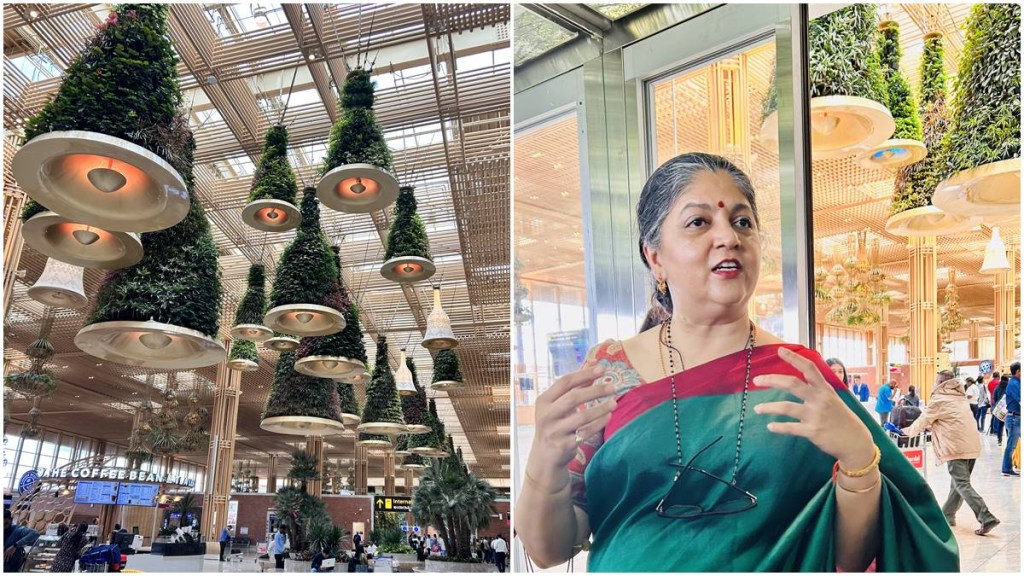Airports serve as a canvas for the myriad human emotions, and the artworks at T2 of Kempegowda International Airport are a testament to this rich tapestry. Centered around two themes – Karnataka’s abundant heritage and culture, and Bharata Natyashastra’s Naurasa, encapsulating nine emotions – the art installations are strategically placed. Serving as beacons in a traveler’s journey, these artworks invite passengers to pause, reflect, and savor the artistic experience.
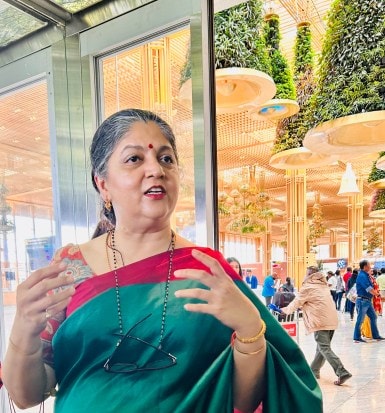
Yamini Telkar, the head of the Art Programs at the Bengaluru International Airport, said “the theme of Naurasa is not only culturally pertinent but also highly fitting for an airport terminal. Recognising that every passenger carries their unique stories and emotions, the aim is to showcase this diversity through the chosen artistic theme.”
Theme of Naurasa
Every artwork is accompanied by a distinctive narrative that mirrors the theme of Naurasa. Striking a balance between tech, art and sustainability, T2 passengers can experience several artists from around the world showcase their work at various points in the terminal. T2 domestic zones display different artworks and T2 international zones other sets of artwork. Each and every artworks represent a different set of human emotions. The entire idea behind such a fascinating compilation of artworks is to give passengers the ease of travel because every traveler in the airport travels with a different set of emotions. Happy, sad, tired, anxiety, hassled – different shades of human emotions. The culmination of these initiatives will help T2 become “a biodiversity hotspot”.
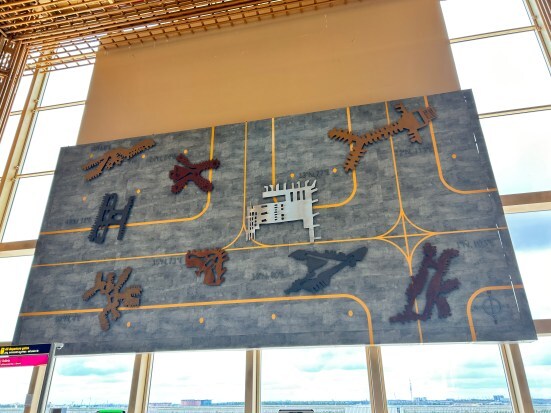
One such unique art displayed in T2 by Singapore sculptor Madhvi Subrahmanian. It showcases a bird’s eye view of airports from around the world with Terminal 2 in the middle of it. Telkar mentioned, “the artist aimed to depict airports resembling creatures when viewed from above, instilling a sense of wonder in passengers. The wall art piece, measuring 40ft by 20ft, intricately incorporates details such as coordinates and tarmac lines, utilising actual tarmac from the runway.”
600,000 live plants
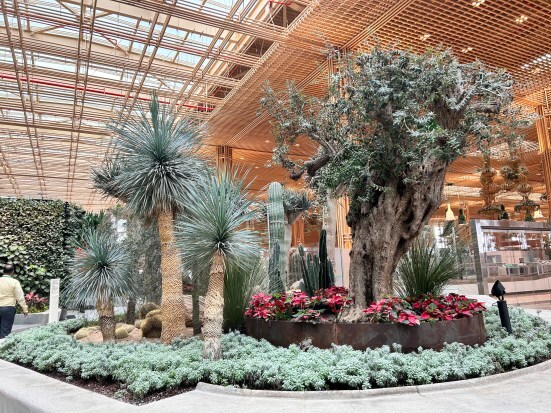
As passengers stroll through various gates at the airport during the day, they will now observe that the typical fluorescent lights on the ceiling aren’t always illuminated. The airport management highlights that T2 can operate “without a single light being switched on,” thanks to the abundant natural light filtering in through the glass walls.
The infusion of natural light serves a dual purpose by not only brightening the terminal but also supporting the well-being of the 600,000 plants in T2, including some remarkable 600-800-year-old trees. This natural light also contributes to a decrease in room temperature by a few degrees.
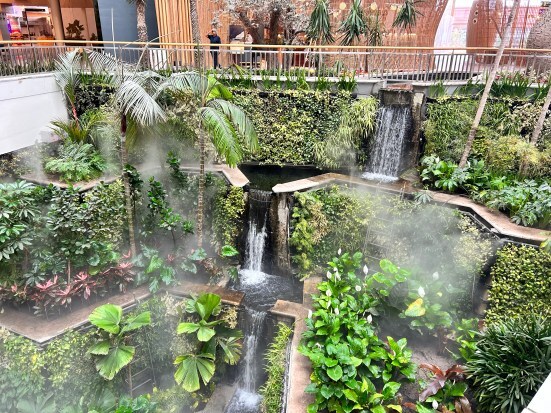
Terminal 2 stands out as a model of modern infrastructure, seamlessly blending with local culture, and, importantly, emphasising green and sustainable practices. Hanging gardens and captivating structures adorn the terminal, with decorative planters suspended from the ceiling, including bell-shaped and chain-like onion basket designs known as veils. In total, there are 500 such systems, each hosting hundreds of plants, resulting in 150,000 live plants suspended from the ceiling alone.
Enhancing the green ambiance, approximately 450,000 live plants thrive on the green walls lining the corridor between check-in counters and security gates. In total, the terminal boasts an impressive 600,000 live plants, providing passengers with a verdant environment as they navigate through the terminal.
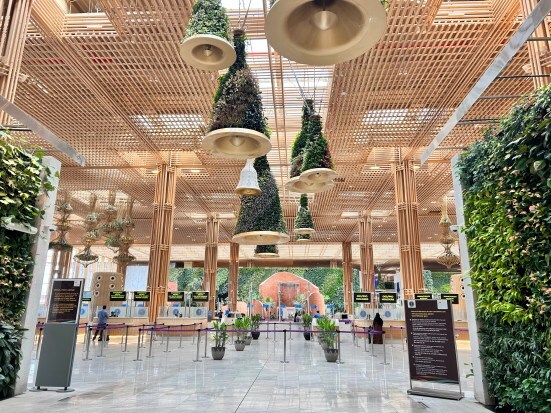
The airport’s design aims to immerse passengers in a unique experience, showcasing diverse flora sourced from multiple ecological habitats in India. From entering the BLR Airport campus via the Main Access Road (MAR) to moving through Terminal 2 and boarding aircraft at the piers, passengers are visually treated to a spectrum of greenery.
Smart irrigation system
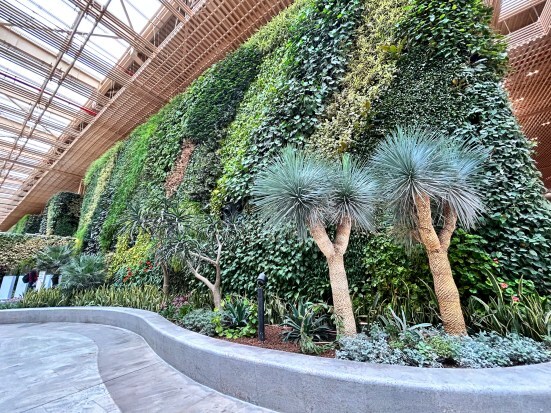
Kempegowda International Airport (KIA) has pioneered the adoption of a weather-based Smart irrigation system across its entire landscape, encompassing Landside, Airside, the interior, and the surroundings of the Terminal. Additionally, a Sensor-based Internet of Things (IoT) system is employed for the distinctive Hanging Gardens at Terminal-2. These green spaces are nurtured by a fully automated irrigation system that operates on harvested rainwater, guaranteeing the flourishing and sustained vibrancy of the plants.

